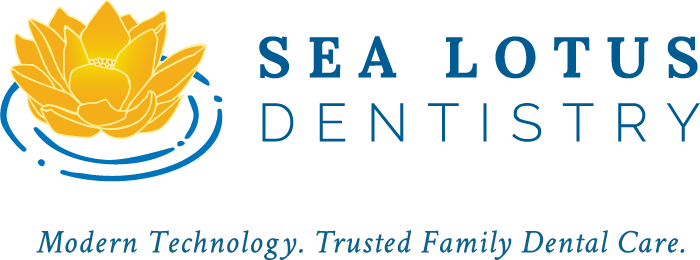
10 Must-Follow Oral Hygiene Tips
October is National Dental Hygiene Month! We are celebrating by sharing our top 10 oral hygiene tips to help you improve your oral health and achieve a lifetime of healthy smiles. 1. Brush Twice a Day Brushing your teeth for a full two minutes, twice a day, can make a significant difference in your oral health. While this may be a well-established routine for some, the average person only spends 46 seconds brushing daily. Using proper brushing technique for a full two minutes after breakfast and before going to bed can ward off plaque buildup and tooth decay. Follow these steps for an effective brushing routine: Squeeze a pea-sized amount of fluoride toothpaste onto your brush. Set a timer for two minutes Angle your toothbrush 45 degrees toward the gumline. Thoroughly brush the outer, inner, and chewing surfaces of the teeth using tooth-sized strokes. Spit out toothpaste when done, but do not rinse out mouth with water. 2. Don’t Neglect Your Tongue Without daily care, debris, bacteria, and dead cells cultivate on the tongue. This buildup not only causes bad breath but can also heighten the risk of tooth decay and other oral conditions. Scraping or brushing your tongue every time you brush your teeth eliminates buildup and helps keep bacteria at healthy levels. 3. Floss Every Day Did you know a toothbrush can only reach 60% of all tooth surfaces? Floss is used to tackle the remaining parts of the tooth. Flossing reduces the risk of cavities by removing harmful plaque between the teeth and below the gumline. People should floss at least once a day, ideally right before bed, to maintain good oral health. Follow the steps below to get the most out of your flossing routine: Cut about 18 inches of floss. Wind the majority of the floss around your middle fingers, leaving about an inch or two in the middle to work with. Hold the floss tightly between your thumb and index finger and gently guide it between each tooth. Curve the floss around the base of every tooth to ensure you reach beneath the gum line. Use a new section of floss for each tooth to prevent bacteria from transferring from one tooth to another. 4. Add a Mouthwash to Your Routine While mouthwash is not a substitute for brushing and flossing, it can enhance your oral hygiene routine. Mouthwash reduces bacteria and plaque while also improving the smell of breath. To maximize the benefits from mouthwash, look for ones with active ingredients, such as cetylpyridnium chloride, chlorhexidine, fluoride, or peroxide. 5. Look for the ADA Seal of Approval With countless dental products on the supermarket shelves, it can be challenging to know exactly which ones are the most effective. We recommend making sure your toothpaste, floss, mouthwash, and toothbrush have the American Dental Association seal of approval to ensure they are good options for your smile. 6. Clean and Replace Your Toothbrush Regularly After a toothbrushing session, your toothbrush is covered with bacteria, saliva, toothpaste, and debris. It is essential to rinse your toothbrush with hot running water and store it in a dry environment after use to prevent bacteria growth. Additionally, toothbrushes need to be replaced every 3-4 months. Toothbrush bristles start to wear down and become less effective after a few months of use. 7. Stay Hydrated Hydration is key to maintaining a healthy smile. Water helps keep the mouth clean, lowers the risk of gum disease, and prevents plaque buildup. If your community has fluoridated tap water, use that as your primary water source opposed to bottled water. Drinking fluoridated tap water helps keep teeth strong and reduces cavities by 25%. 8. Eat More Fruits and Vegetables Processed food may be convenient for busy schedules but is not the best choice for oral health. Fresh, crunchy produce is healthy for your body and teeth. Snacking on fruits and veggies stimulates saliva flow, which helps wash away harmful bacteria and food particles. Fruits and vegetables are also packed with essential vitamins and minerals that promote healthy, strong teeth. 9. Limit Sugar Intake The mouth houses a whole ecosystem of diverse microorganisms, including bacteria that thrive on sugars and starches. When these bacteria break down sugars, they generate acid as a byproduct. This acid can weaken tooth enamel, heightening the risk of tooth sensitivity and cavities. Sugar seems to be added to everything nowadays and can be difficult to avoid completely. As a practical guideline, we recommend limiting your sugar intake to less than 10% of your daily calories to promote a healthier smile. 10. Visit Your Dentist Twice a Year Seeing your dental provider twice a year for preventive care is essential to maintaining a clean and healthy smile. Even with diligent daily brushing and flossing, some plaque can still get left behind. When plaque is not removed from the teeth within 48 hours, it calcifies and transforms into tartar. Tartar cannot be removed by a toothbrush; only professional dental tools can. Tartar should be scraped from the teeth at least twice a year by a registered dental hygienist. Daily oral hygiene is essential for maintaining a healthy mouth and overall wellness. If you are looking for ways to improve your oral hygiene routine, ask us for personalized tips at your next cleaning appointment. Your hygienist can strategize with you on how to improve oral hygiene to avoid unwanted tooth decay and ace your next dental exam.
